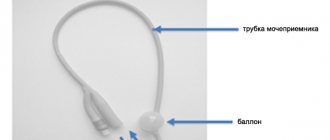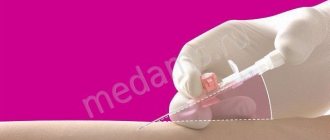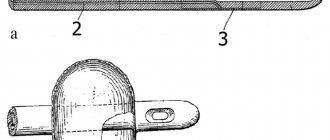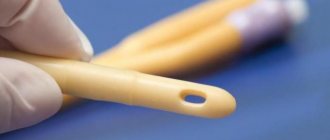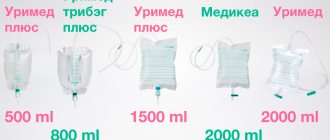How to flush central and peripheral catheters
Depending on the type of access, there are:
- central venous catheter (serves to provide access to the central vein);
- peripheral venous catheter (provides access to the patient’s venous bed).
How to flush a catheter? Caring for any intravenous catheter involves flushing with saline solution 0.9% or a mixture with heparin: 100 IU (0.02 ml) of heparin per 1 ml of sodium chloride. This flushing is performed before and after each use of the catheter. The saline solution clears the internal cavity of the catheter of drug residues, and the introduction of heparin prevents blockage.
The catheter is washed regularly, 1-3 times every day. If the patient is undergoing long-term infusions, there is no need to frequently flush the catheter.
Rules for caring for a urinary catheter
When a patient has a catheter, bladder infections cannot always be prevented, but the likelihood of them occurring can be reduced. In this section, we will go into more detail about how to care for your urinary catheter. Please note that all manipulations are carried out after thorough hand washing and preferably wearing gloves.
Rules for caring for a urinary catheter:
- Wash the skin around the catheter with soap and water twice daily to avoid irritation and infection. In addition, wash the patient after each bowel movement. After washing thoroughly, with light movements, dry the skin. When wiping after bowel movements, washing and drying the perineum, women should move from front to back to prevent bacteria from the rectum from entering the catheter and urinary tract.
- Rinse the urine bag with water daily. You can add a 3% solution of table vinegar to the water at a ratio of 1:7.
- Empty the urine bag every 3-4 hours.
- Always keep the urine bag below bladder level.
- Tell your doctor immediately if urine begins to leak from the catheter, abdominal pain, a feeling of fullness, or blood or flakes in the urine. If the catheter is clogged and causes pain, it must be replaced immediately.
- Never pull on the catheter. Disconnect the catheter only to flush or replace it, or to empty the urine bag.
Reasons why urine leaks: the catheter is too thin, the balloon is not inflated enough, the catheter or urinal tube is kinked, the catheter is blocked. If the outflow of urine stops, the reasons may be:
- kinking of the catheter or urinal tube,
- insufficient fluid intake into the body (increase the amount of fluid consumed),
- the urine bag is fixed too high (lower it below the level of the bladder),
- catheter blockade,
- impaired renal function (anuria) as the patient’s condition worsens.
The catheter installed in the bladder can be washed by the patient himself or his relatives. A warm saline solution is used for rinsing. If sediment or flakes appear in the urine, rinse the catheter with furatsilin solution. At home, you can prepare a solution from two furatsilin tablets dissolved in 400 ml of boiled water. Strain the solution through a double layer of gauze. You can buy a ready-made solution at a pharmacy. Also suitable are a 3% solution of boric acid, dioxidine diluted in a ratio of 1:40, miramistin, and a 2% solution of chlorhexidine. Rinse the catheter with a 50 or 100 milligram syringe (Zhanet syringe). Before use, rinse the syringe with boiling water, and in between store it in a disinfectant solution: 3% chloramine or 2% chlorhexidine. Solutions are sold at pharmacies. After disconnecting the tube from the urinal, treat its end outside with furatsilin solution or any antiseptic solution. Then draw the solution into the syringe, insert the cannula of the syringe into the hole in the tube and slowly inject the solution, starting with small portions (20-30 ml). After injecting portions of the solution, remove the syringe from the catheter. The solution will flow freely. If a therapeutic effect on the mucous membrane of the bladder is required, rinsing can be done daily. In other cases - as needed.
How to flush the port system
The U-PORT port system provides long-term access to the patient’s central vein, simplifies the injection procedure, and makes it less painful. With proper care, U-PORT can be used for several years without the need for replacement. One of the rules of such care is regular flushing of the system. As with an intravenous catheter, the system should be flushed with 0.9% sodium chloride solution each time before and after drug administration. A heparin lock is placed after a session of using the port system. The heparin concentration in this case is selected in the range from 100 to 500 units/ml.
How to flush a catheter if the port system is rarely used? In such a situation, it is recommended to flush it every 4-5 weeks to avoid clogging.
Intravenous (venous) catheter
Vascular catheters are designed to provide access to central and peripheral veins.
These catheters should not be confused with cavity catheters, such as the Foley catheter, Nelaton catheter and others. Indications for placing a peripheral venous catheter.
1. Emergency administration of infusion solutions with the prospect of using the created venous access in the hospital. Most often this is done in the confines of an ambulance.
2. In the hospital, peripheral catheters are placed during long-term intravenous therapy.
3. Intravenous anesthesia during surgery.
4. Install a catheter for women in labor
5. Frequent collection of venous blood for tests.
6. Blood transfusion.
7. In case of parenteral (intravenous) nutrition of the patient.
8. Temporary measure before insertion of a central catheter.
Description of the peripheral venous catheter
Externally, they are a packaged disposable product for long-term intravenous infusions.
A – peripheral intravenous catheter with a port. B – peripheral intravenous catheter without port. A standard intravenous peripheral catheter consists of: - a polymer tube connected to a polymer cannula (1), - a metal needle tube connected to the cannula, - a polymer plug (2). — port (3) optional.
Classification of peripheral venous catheters
There are the following subtypes of intravenous catheters:
1. By the presence of an additional port.
- with port; - without port;
Peripheral catheter with an additional port.
There is a variant of an intravenous catheter with an additional port.
The port is located on top of the catheter. The catheter port allows bolus (quick) administration of medications or flushing of the catheter with heparin and saline. solution. Most modern peripheral catheters have an additional port. The port is closed with a plastic cap to ensure sterility Example of an intravenous peripheral catheter with an additional port
2. By the presence of wings:
— peripheral catheter with wings; - peripheral catheter without wings;
The wings may have holes for suturing to the patient's skin.
3. Based on the presence of a safe device at the peripheral catheter:
— peripheral catheters are safe;
- standard peripheral catheters
Peripheral catheters are safe.
Currently, peripheral safety catheters are becoming available from a number of manufacturers. Most of them implement a safe device due to the presence of a special capsule, or “bullet,” which, after catheterization, is automatically put on the needle. This eliminates the risk of needle injury to medical personnel. In this case, the technique for placing a peripheral safety catheter is no different from the standard technique. The price for peripheral safe catheters is significantly higher than for catheters that do not have such a device. You can buy a peripheral catheter
on our website.
4. According to the presence and number of X-ray stripes on the wings of the catheter:
- without x-ray contrast stripes;
- 2 stripes;
- 4 stripes;
- 6 stripes.
5. Intravenous catheters sizes by color
In accordance with GOST ISO 10555-5-2012, the sizes of catheters are determined. The size of the peripheral catheter is determined by the gauge. Intravenous catheters differ in color. For convenience, each peripheral catheter size is color coded. This allows the medical professional to quickly select the appropriate catheter size for a specific procedure. The table below shows intravenous catheters with sizes by color. Each tube outer diameter has a specific color code.
This table is not identical to GOST R ISO 6009-2013.
You can select and buy an intravenous catheter in our catalog. Delivery is carried out throughout the Russian Federation by SDEK. To the catalogue.
6. Needle butterfly
It is a special type of peripheral catheter. The butterfly needle is a needle integrated with wings with a tube. The length of the butterfly needle tube differs depending on the model. Unlike the classic peripheral catheter, the butterfly needle is intended for short-term insertion. Also suitable for blood collection. One of the key advantages of the butterfly needle is the small diameter of the needle. Butterfly needles are placed for no more than 24 hours.
Scope of application of butterfly needle:
1. Resuscitation and gerontology for patients with “collapsed” veins
2. Neonatology (maternity hospitals and specialized departments of hospitals). Designed for administration and collection of blood to newborns and young children.
3. Blood collection from severe patients.
Safe butterfly needles
There are butterfly needles with a safety device, this is the so-called safety butterfly needle
After the infusion is carried out using a safe butterfly needle, the medical staff removes the needle from the vein and presses a special button on the body of the safe butterfly needle. As a result, the needle goes into a special cylinder, eliminating the risk of infection of personnel. Safe butterfly needles are most in demand when working with urgent patients and with known infected patients
GOST catheters
The main GOST for catheters is GOST ISO 10555-5-2012. This guest describes:
- catheter structure;
- catheter color coding;
- requirements for the needle, catheter cannula;
- flow rate;
- strength of the connection between the cannula and the tube;
- information on individual packaging.
The material was prepared using the following sources:
- GOST ISO 10555-5-2012 Single-use sterile intravascular catheters. Part 5. Peripheral catheters with an internal needle;
- GOST R ISO 6009-2013 Single-use injection needles. Color coding;
- GOST R ISO 11070-2010 Single-use sterile introducers. Technical requirements and test methods.
